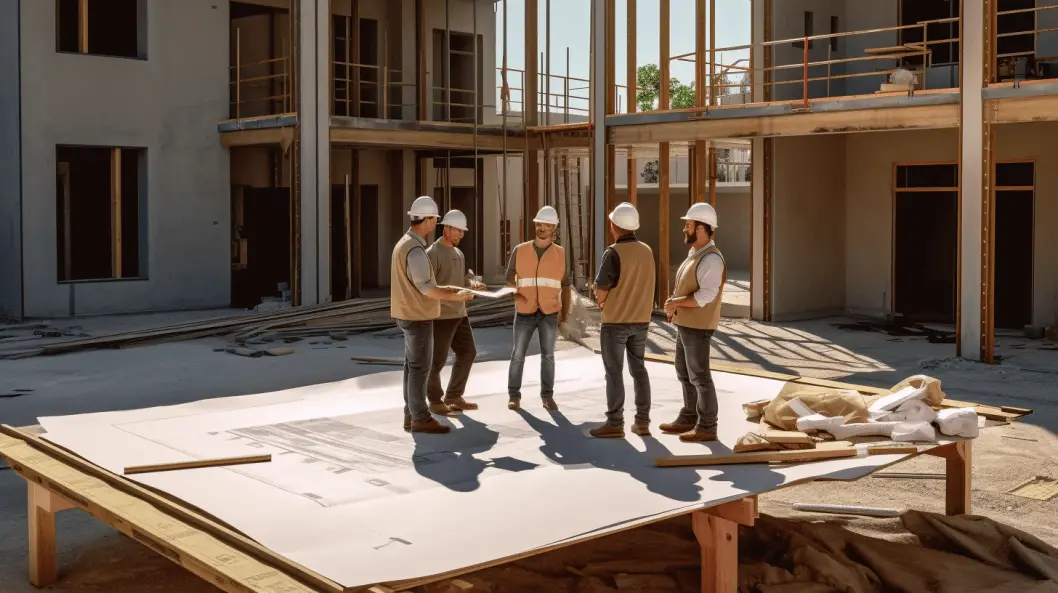A Pre-construction Risk Assessment (PCRA) is a systematic process used in the construction industry, particularly in healthcare facility projects, to evaluate potential risks before construction begins.
The goal of a PCRA is to identify and mitigate risks to building occupants, including patients, staff, visitors, and the construction team.
This assessment is crucial for ensuring safety, maintaining air quality, controlling infection, managing utility requirements, and minimizing noise and vibration during construction activities.
The PCRA process often includes the following steps:
- Creating a detailed description of the project to identify potential risks.
- Evaluating activities that could pose risks, such as falling debris or air quality issues.
- Implementing measures to mitigate identified risks, such as critical barriers or control cubes.
- Completing required forms and documentation for the assessment.
For healthcare facilities, the PCRA is especially important due to the need to maintain a sterile environment and ensure that patient care is not compromised.
It is a required process for all healthcare projects, and it must cover various aspects of the construction project, from infection control measures to utility requirements.
For more detailed information on the PCRA process, you can refer to resources such as the Pre-construction risk assessment for health care facilities article from HFM Magazine, which outlines the importance of the assessment and what it should include.
Additionally, the Joint Commission’s standards for critical access hospitals provide guidelines on conducting a PCRA to ensure compliance with healthcare regulations.
Pre-construction risk assessment has become an integral and essential phase amidst construction processes.
Industry professionals understand the magnitude of potential risks in construction projects, hence the imperativeness of conducting assessments before any execution plan.
Designed to explore various aspects of pre-construction assessment, this article promotes a deeper understanding of the concept, its primary features, evaluation methods, and practical scenarios in the implementation.
It aims to offer guidance on identifying hazards, evaluating risks, applying control measures, and using effective tools for assessment.
This review will also explore the prospects and anticipated challenges within pre-construction risk assessment.

Understanding Pre-Construction Risk Assessment
Understanding Pre-Construction Risk Assessment
Pre-construction assessment is an integral part of the planning and preparation phase of a construction project.
The process identifies, evaluates, and mitigates potential hazards during construction, covering various possible risks, including technical, financial, legal, and environmental concerns.
The Necessity of Pre-Construction Risk Assessments
Risk assessment at the pre-construction phase is critical to successfully delivering construction projects.
Firstly, it ensures workplace safety by identifying hazards related to the construction process or site. It allows for detailed planning and implementation of safeguards to minimize accidents and ensure the well-being of workers.
Secondly, it is instrumental in the financial planning of the project. Assessments protect clients and contracting firms from devastating financial losses by identifying potential cost overruns, budget shortfalls, or unanticipated expenditures.
Stakeholders and Implementation Phases
Pre-construction risk assessments involve many stakeholders, including architects, engineers, construction managers, environmental consultants, health and safety officers, and legal advisors.
These stakeholders engage in dialogue to identify risks, develop mitigation strategies, and implement them effectively.
The assessment typically happens in the project’s planning phase, but continuous updates may be needed as conditions change.
Risk assessments are revisited and updated throughout the project lifecycle from conception to final touches.
Types of Risks Considered in Pre-Construction Risk Assessments
Pre-construction risk assessments consider various categories of possible risks. In the technical category, risks range from design flaws to equipment failures and construction errors.
Financial risks include budget overruns, delays, and potential litigation.
Environmental risks assess the project’s environmental impact and any potential legal entanglements. Legal risks are related to contract disputes, permit issues, and regulatory compliance.
Benefits of Pre-Construction Risk Assessments
Aside from ensuring the safety of workers and financial stability, pre-construction risk assessments also provide various benefits to stakeholders.
Comprehensive risk assessment offers improved project predictability, reducing the chances of unwelcome surprises that can disrupt project timelines.
Moreover, stakeholders can foresee possible delays and take steps to prevent or reduce their impact.
Risk assessments also convey transparency and accountability to investors, sponsors, and the broader community, bolstering confidence in the project.
Through early identification and mitigation of potential risks, pre-construction risk assessments can ultimately contribute to the project’s overall success.
Financial Considerations of Pre-Construction Risk Assessment
Project owners and managers must fully comprehend potential risks to optimize budget allocations and safeguard against unexpected financial drawbacks.
An accurate and high-quality assessment can aid in anticipating legal risks, thereby circumventing costly legal proceedings and settlements.
Furthermore, recognizing and addressing potential risks can diminish the likelihood of project delays or failures and avoid substantial financial expenditures.
From a broader perspective, a pre-construction assessment serves as an exhaustive, proactive strategy towards risk management.
It emphasizes foresight and preventative measures over reactive ones, ensuring project success and protecting the underlying financial investments.
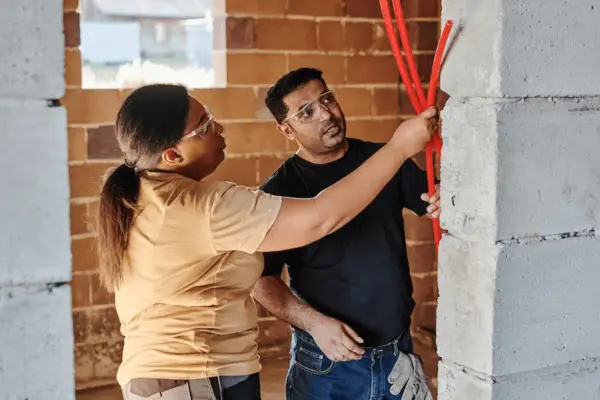
Components of Pre-Construction Risk Assessment
Hazard Detection in Pre-Construction Risk Assessment
Recognizing potential hazards early is integral to an all-encompassing pre-construction risk assessment.
A thorough audit of the proposed work site is required to detect any potentially lurking hazards that may surface during construction.
These threats could involve unstable ground conditions, proximity to water bodies, availability and quality of building materials, and any hazardous substances.
Trained professionals perform this meticulous task to ensure every plausible risk is mapped out to avert disastrous, life-threatening consequences or significant financial losses.
Risk Evaluation and Prioritization
Once hazards are identified, they must be assessed and prioritized in terms of potential severity and likelihood.
This process, known as risk evaluation or analysis, necessitates a thorough understanding of each identified hazard’s potential outcomes and the likely occurrence frequency.
Various assessment factors are considered, such as the safety measures in place, the nature of adjacent areas and structures, typical weather conditions, and the proficiency level of the construction crew.
The aim is not merely to determine whether a risk exists but to establish the magnitude of its potential impact and inform the development of an appropriate risk mitigation strategy.
Risk Control Measures in Pre-Construction
Following risk analysis comes the process of establishing control measures. These practical actions and strategies are designed to eliminate, minimize, or manage identified risks.
Control measures in pre-construction mainly revolve around creating safe working conditions, ensuring appropriate and safe machinery use, implementing safety regulations and guidelines, and providing relevant training to the staff.
These measures could be preventive, aimed at avoiding the occurrence of a hazardous event, or reactive, designed to mitigate the consequences of a hazard if it should occur.
Both measures should typically be implemented in a comprehensive risk control strategy, ensuring risks are not only mitigated but also managed should they occur.
Significance of Each Component in Pre-Construction Risk Assessment
The significance of each component in pre-construction assessment cannot be understated.
Hazard identification facilitates the early detection of potential risks, allowing adequate time for designing suitable control measures.
Risk evaluation helps understand the severity and frequency of each identified hazard, enabling the team to prioritize hazards and formulate an effective risk management strategy.
Control measures, on the other hand, ensure that potential hazards are either eliminated or their potential effects are minimized, leading to safer working environments and successful project completions.
Integrated Approaches to Pre-Construction Risk Assessment Implementation
An effective pre-construction assessment requires a well-coordinated effort from all parties involved, from project managers, health and safety officers, and construction workers, to external auditors.
Using cutting-edge industry technologies like advanced data analytics, Geographic Information Systems (GIS), and Building Information Modelling (BIM) can significantly improve hazard identification and risk assessment.
Regular safety protocols, hazard identification, and risk control training for construction personnel can boost preparedness for potential risks, ensuring optimal site safety and project efficiency.
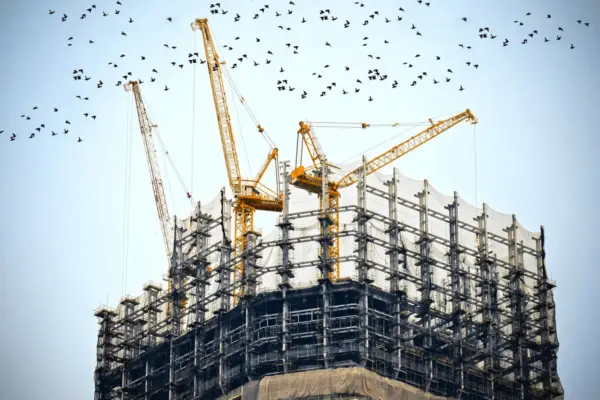
Methods and Tools Used in Pre-Construction Risk Assessment
The Essentiality of Pre-Construction Risk Assessment
The role of pre-construction risk assessment in the project planning phase is pivotal within the construction industry.
This stage involves identifying, analyzing, and mitigating potential risks that may impact a construction project even before it commences.
Adopting such a proactive measure aids in accident prevention, cost management, and adherence to project timelines, all of which ensure the integrity of any construction project.
Structured What-If Technique (SWIFT)
SWIFT is a high-level risk assessment tool typically used in the early stages of a project when there is limited information available.
It involves brainstorming sessions where industry experts discuss hypothetical project situations, identify potential hazards and rank them based on their severity, likelihood, and detectability.
The main advantage of SWIFT is that it encourages creative thinking and promotes comprehensive risk identification.
Failure Mode and Effects Analysis (FMEA)
FMEA is a systematic approach to identifying and assessing the risks associated with different system or process failure modes.
The risk of each failure mode is assessed based on three criteria: the likelihood of occurrence, the severity of the effect, and the detectability of the failure.
Through the application of FMEA, organizations can focus resources on managing high-risk failure modes.
Thus, FMEA’s primary advantage lies in its ability to prioritize risks, aiding in efficient resource allocation.
Hazard and Operability Studies (HAZOP)
HAZOP is a detailed and systematic approach to identifying and evaluating risks in complex industrial processes.
The HAZOP study focuses on finding potential deviations from the intended operating conditions and their possible consequences.
These findings inform the development of risk mitigation measures. The principal advantage of HAZOP is that it can identify previously unforeseen hazards due to its focus on deviations, making it particularly beneficial in complex projects.
Selecting the Appropriate Risk Assessment Tool
The choice of a specific risk assessment tool is determined by various aspects such as project type, complexity, and the organisation’s resources.
For instance, SWIFT is a tool typically used during preliminary stages of project planning when information is scarce.
In contrast, HAZOP is often employed when information is available and the project or process is intricate.
Meanwhile, FMEA proves its usefulness in scenarios where risk prioritization is essential due to potentially significant impacts on the project.
The team’s makeup and expertise should also be kept in mind, given that some tools heavily depend on information from subject matter experts.
Other factors that may need evaluation encompass the time and resources necessary to execute the assessment and the traceability and repeatability of the process.
By understanding these risk assessment tools and methodologies, industry professionals can make well-informed decisions and manage potential risks more effectively, ultimately boosting project success rates.
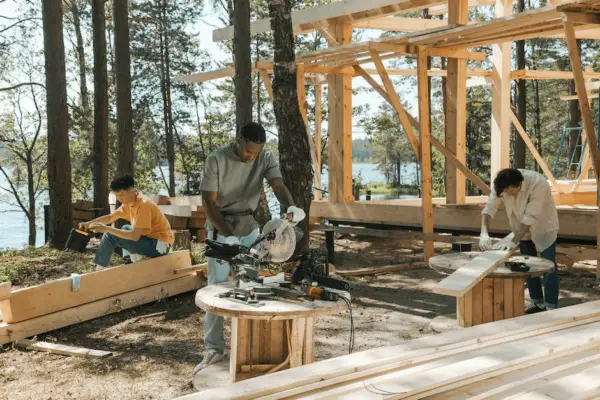
Case Study Analysis of Pre-Construction Risk Assessment
Illustrating the Importance of Pre-Construction Risk Assessment: A Look at Past Projects
The real-world application of pre-construction risk assessment is integral to any construction project’s success.
This was notably demonstrated during the construction of the Channel Tunnel, an underground tunnel connecting the United Kingdom and France.
The project required a meticulous risk assessment to address potential pitfalls like geological conditions, cross-border logistics, and engineering complexities related to tunneling under the sea.
The thorough pre-construction risk assessment undertaken by the project planners successfully mitigated these potential risks, culminating in the tunnel’s successful completion.
This scenario underscores the importance of comprehensive risk analysis in large-scale construction projects.
Learning from Failures: A Case Study
Conversely, there have been instances where inadequate pre-construction risk assessment results in project failures and cost overruns.
The construction of the Sydney Opera House offers insight into such a situation.
The project was marred by budget overruns and delays, largely arising from unforeseen technical challenges.
For example, the innovative and complex design of the structure posed several unplanned difficulties.
The project’s budget ballooned from A$7 million to over A$100 million, and construction took 14 years instead of the planned five.
A thorough pre-construction risk assessment could have identified these potential design challenges and associated costs, underscoring the importance of meticulous risk assessment.
Benefits of Extensive Risk Assessment: High-Speed Rail Construction
From a broader perspective, constructing high-speed rail across different countries is another instance where pre-construction risk assessment has proven essential.
Due to the technology’s novelty and enormous associated risks, the importance of pre-construction risk assessment is magnified.
Experts have used historical data and predictive modeling to assess likely risks associated with different aspects of these projects, ranging from the route’s geology to the tech’s novelty.
By considering risks such as seismic activity, weather phenomena, and socio-political factors, planners have minimized unforeseen delays and cost escalations, illustrating the benefits of comprehensive risk assessment.
Lessons in Risk Assessment from Infrastructure Reconstruction
Lastly, looking at post-Hurricane Katrina infrastructure reconstruction provides lessons in post-disaster risk assessment.
As the affected region grappled with rebuilding, authorities recognized the need for comprehensive risk assessments to guide their efforts.
They evaluated risks related to weather, material availability, labor shortages, and socio-economic impacts.
These assessments proved instrumental in prioritizing and executing reconstruction efficiently, highlighting the relevance of risk assessment even in post-disaster scenarios.
Pre-construction risk assessment is a crucial aspect of any construction project, widely recognized as a significant determinant of the project’s ultimate success or failure.
Understanding past and currently unfolding projects provides industry experts with the insights they need to manage better and evaluate risks, allowing for more strategic preparation when faced with the potential obstacles of future infrastructure builds.

Future Developments and Challenges in Pre-Construction Risk Assessment
Embracing Technological Advancements in Pre-Construction Risk Assessment
As digital technologies evolve, a transformative shift in pre-construction risk assessment processes is on the horizon.
Technological breakthroughs such as artificial intelligence, machine learning, and computer modeling equip engineers with cutting-edge tools to analyze potential risks with unprecedented precision and efficiency.
These tools enable exhaustive simulations and predictive analyses that can assess all facets of a project, ranging from the odds of a material failure to possible environmental repercussions.
A prime example is the rising prominence of Building Information Modeling (BIM), a powerful tool for identifying and managing risks in the pre-construction phase.
Sophisticated 3D modeling software can identify potential issues well before the commencement of construction, enabling timely rectifications in the design and planning stages.
Additionally, the importance of drones and robotics in on-site surveying is escalating, as they can access areas considered hazardous or unreachable for humans and collect extensive data for risk analysis.
Challenges in Pre-Construction Risk Assessment
Despite these advancements, the industry still faces substantial challenges in pre-construction risk assessment. One of the most prominent hurdles is the human factor.
Reliance on historical data and personal judgment in risk management can sometimes lead to inaccuracies and biases, exacerbating the pressure of tight construction schedules and budgets.
Furthermore, the integration of new technologies into pre-construction processes also poses challenges.
Professionals need ongoing training and education to keep up with rapidly advancing technology.
Moreover, implementing these technologies can be cost-prohibitive for small and medium-sized construction firms.
Data Security and Privacy Concerns
Another future challenge gaining attention is data security. With the increased use of digital technologies in risk assessment comes the increased risk of cyberattacks.
Sensitive project data may be vulnerable to hackers, presenting a significant risk that needs to be included in pre-construction risk assessments.
Similarly, privacy concerns surrounding data collection, especially where drones are involved, must be addressed.
There are regulations governing what data can be collected and how it should be used, which can present a complex minefield for construction companies to navigate.
Solutions and Mitigation Strategies
Risk assessment professionals need to leverage technology to address these challenges while remaining aware of its potential pitfalls.
Investments in security and privacy technologies are imperative, as is ongoing training for staff to keep up-to-date with emerging tools and technologies.
Collaboration across industry, academia, and government can also help pave the way for advancements in pre-construction risk assessment.
Sharing non-sensitive data, best practices, and insights can help the industry evolve and adapt in the face of future challenges.
In conclusion, the future of pre-construction risk assessment lies in harnessing technological advances while addressing the associated challenges.
Though this path is fraught with complexities, it holds untold potential for improving accuracy, efficiency, and safety in construction.
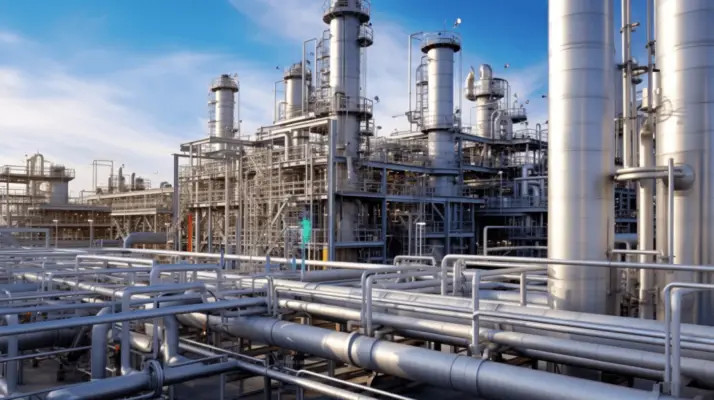
Conclusion
The broad spectrum of pre-construction risk assessment is constantly evolving and industry experts must strive to adapt to these shifts.
Adopting effective methodologies and tools for hazard identification, risk evaluation, and implementation of control measures is crucial.
Evaluating past case studies helps better appreciate the real-world application of these concepts, teaching invaluable lessons from both successes and failures.
As we anticipate continued growth and development in this area, this guide will provide the necessary arsenal for those seeking mastery, propelling them to create safer and more efficient construction environments by conducting proficient pre-construction risk assessments.

Chris Ekai is a Risk Management expert with over 10 years of experience in the field. He has a Master’s(MSc) degree in Risk Management from University of Portsmouth and is a CPA and Finance professional. He currently works as a Content Manager at Risk Publishing, writing about Enterprise Risk Management, Business Continuity Management and Project Management.

